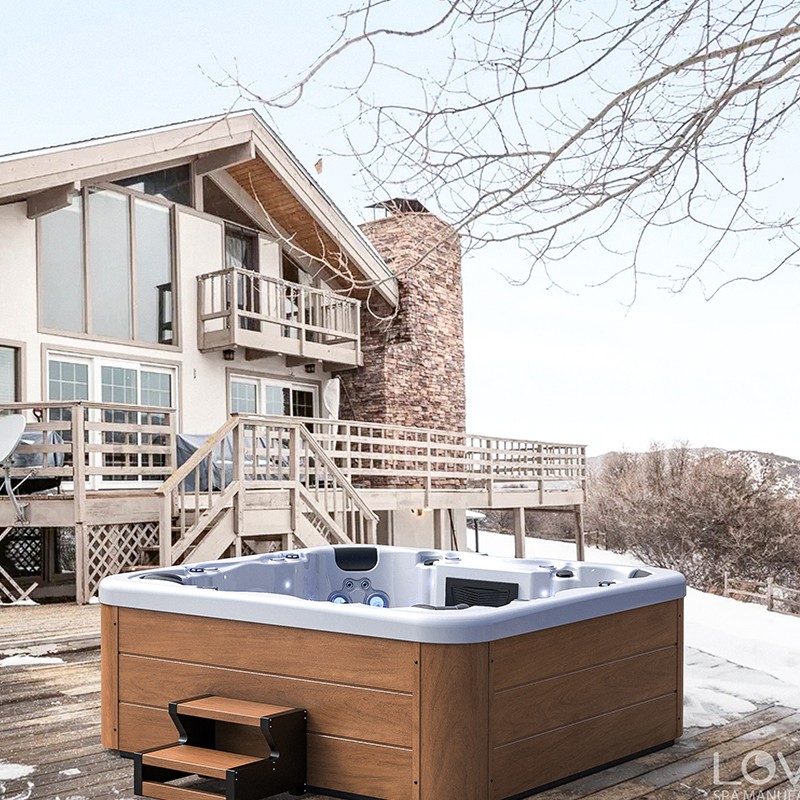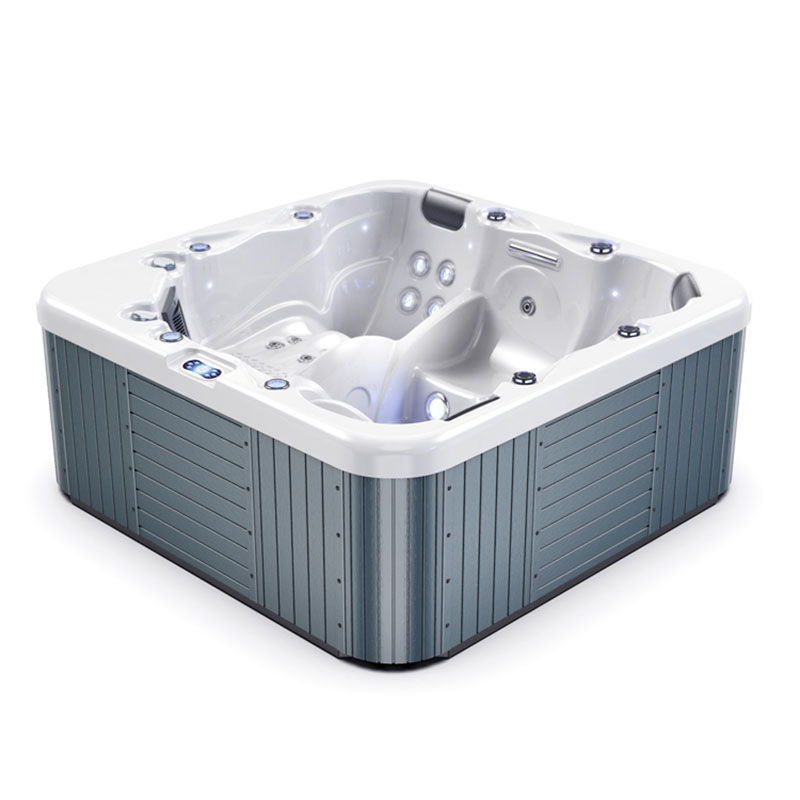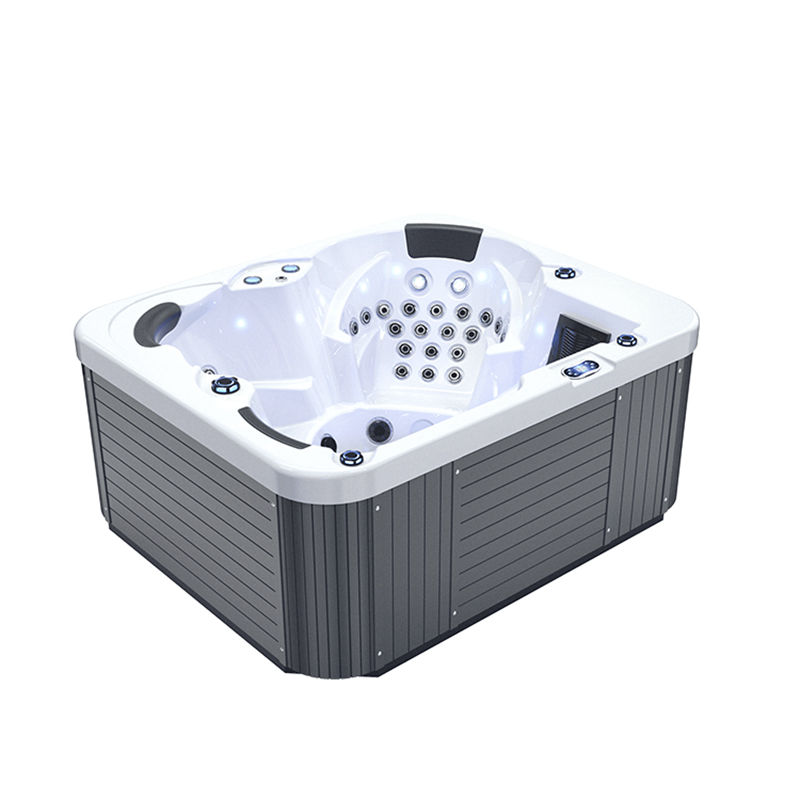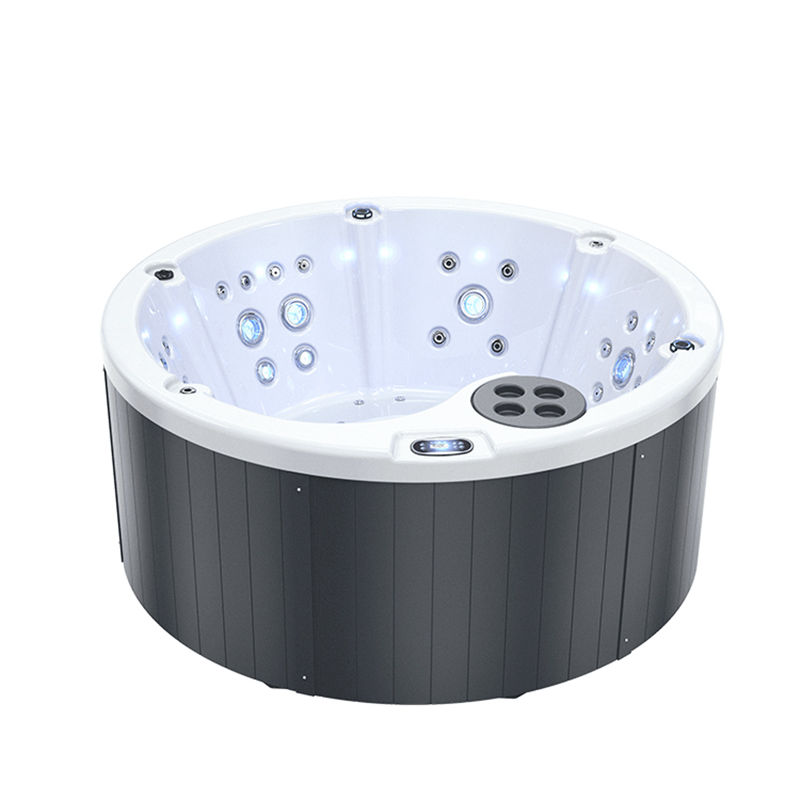Outdoor spa hot tubs are considered a luxurious retreat, offering a relaxing massage experience and helping to relieve fatigue and improve sleep.
However, water temperature is a crucial factor when using an outdoor spa hot tub. While many prefer to set the water temperature high for enhanced comfort and relaxation, excessively high temperatures can lead to a number of health issues.
This article will delve into why it's important to avoid excessively high water temperatures in outdoor spa hot tubs and explain the importance of temperature control for health, comfort, and the longevity of the tub.

Outdoor Spa Hot Tubs: The Relationship Between Temperature and Health
1. The Effect of Temperature on the Body
The water temperature of an outdoor spa hot tub directly affects the user's body's response. The right water temperature can help the body relax by promoting blood circulation, relieving muscle tension and stress, and promoting relaxation. However, excessively high water temperatures can negatively impact the body.
The typical water temperature in a spa hot tub ranges from 37°C to 40°C (98°F to 104°F). This range is comfortable for most people and can effectively promote muscle relaxation and relieve joint pain. However, when the water temperature exceeds this range, especially above 42°C (107.6°F), the body is more likely to experience discomfort.
2. High Temperatures Stress the Cardiovascular System
High temperatures have a particularly significant impact on the cardiovascular system. The hot water in a spa tub causes body temperature to rise and blood vessels to dilate. This forces the heart to work harder to maintain normal blood circulation. Prolonged immersion in excessively hot water can increase the workload on the heart, leading to increased blood pressure and heart rate.
The disruption of high temperatures to blood circulation can cause the following health problems:
• Low blood pressure: While high temperatures can dilate blood vessels and increase blood flow in the short term, prolonged immersion in hot water can cause a drop in blood pressure, leading to dizziness or fainting.
• Dehydration: In hot temperatures, the body sweats more, leading to water loss. Prolonged periods without adequate fluid intake can lead to dehydration and worsen other health problems, such as headaches, fatigue, and nausea.
• Cardiac Load: For those with heart disease, high temperatures can trigger heart problems, exacerbate existing conditions, and increase the risk of heart attacks.

3. Skin Problems
High-temperature water can also be very irritating to the skin. When the temperature is too high, the skin becomes more sensitive. Especially after prolonged immersion in overheated water, the skin may become irritated, resulting in symptoms such as redness, burning, dryness, and peeling.
Some common skin problems include:
• Excessive Dryness: High-temperature water strips the skin's surface of its natural oils, weakening the skin's barrier function and increasing moisture loss, leading to dryness and roughness.
• Skin Allergies: The irritation of hot water can cause skin allergies, resulting in redness, swelling, and itching, especially for those with sensitive skin.
• Vasculodilation: Overheated water can cause the small blood vessels on the skin's surface to dilate. Over time, this can affect the skin's complexion and health.
4. Impact on the Respiratory System
While the hot steam from a spa hot tub often moisturizes the air and has a relaxing effect, excessive temperatures can also negatively impact the respiratory system. The combination of high temperature and humidity can irritate the respiratory tract, especially for people with respiratory conditions such as asthma or allergies.
The steam from a hot tub may:
• Exacerbate respiratory discomfort: Heat and humidity may worsen asthma symptoms or cause throat irritation.
• Shortness of breath: Excessively high temperatures can cause the air to become stuffy and difficult to breathe, especially during prolonged use.
5. Impact on Temperature Regulation
The human body has a complex mechanism to regulate its temperature, but immersion in excessively hot water can disrupt this system. Especially with prolonged immersion in excessively hot water, the body may not be able to regulate its temperature effectively, leading to hyperthermia and symptoms of heat stroke.
Common symptoms of heat stroke include:
• Dizziness, nausea, and vomiting
• Fatigue and unconsciousness
• Dry, hot skin and a rapid heartbeat
These symptoms indicate that the body is experiencing a temperature imbalance in the face of excessively high temperatures, and timely cooling measures are essential.

Outdoor spa hot tub: What are the effects of excessively hot water on equipment?
1. Spa Hot Tub Temperature Control
Outdoor spa hot tubs are typically equipped with advanced temperature control systems to help users set the ideal water temperature. Excessively high water temperatures not only impact the user's health but can also damage the tub's equipment.
• Loading the Hot Water System: Excessively high water temperatures can overload the spa hot tub's heating system. Excessive use of the heating element can overload the heating element, increasing energy consumption and shortening the equipment's lifespan.
• Damage to the Pump and Plumbing System: Hot water in the tub can affect the operation of the pump and piping. Overheated water can cause materials to expand and corrode. Long-term exposure can lead to equipment failure, leaks, pump damage, and other problems.
2. Reduced Insulation
Spa hot tub insulation is typically designed to maintain a stable temperature range. If the water temperature is too high and maintained for an extended period, the tub's insulation system may become unstable, reducing insulation effectiveness and increasing energy consumption.
3. Cleaning and Maintenance
Using a spa hot tub at excessively high temperatures for extended periods can accelerate the deposition of minerals and chemicals in the water, causing scale to form inside the tub. Scale not only affects water quality but can also hinder water flow, strain the filtration system, and cause malfunction.

How to control the temperature of an outdoor spa hot tub?
1. Set the temperature appropriately
To avoid overheating, it's recommended to keep the water temperature in your outdoor spa hot tub within the ideal range, typically between 37°C and 40°C. Children, pregnant women, and those with cardiovascular disease can set the temperature slightly lower to avoid health problems caused by excessively high water temperatures.
2. Monitor the water temperature regularly
It's important to check the water temperature regularly during use. Many modern outdoor spa hot tubs are equipped with temperature displays that monitor the water temperature in real time. If the water temperature exceeds the recommended limit, adjust it immediately.
3. Manage your usage time appropriately
Prolonged soaking in hot water can be stressful for the body. Therefore, it's recommended that you limit your spa hot tub usage to no more than 20 to 30 minutes. Especially when the water temperature is high, minimize soaking time to avoid excessive fatigue and discomfort.
4. Hydrate
When using a spa hot tub, the body loses a significant amount of water through sweat. Therefore, it's important to drink plenty of water before and after soaking to avoid dehydration and other health issues.
Do your spa products include well-known component brands?
Yes, our Lovia Spa products are built with trusted components from Aristech Acrylic, Balboa Control Systems, and LX Pumps. This ensures that every spa maintains high quality standards while still being offered at affordable factory-direct prices. Buyers can purchase with confidence, knowing that our spas combine brand-name reliability with wholesale affordability. As a professional manufacturer and supplier, we design each product to balance low purchasing costs and long-term durability.




